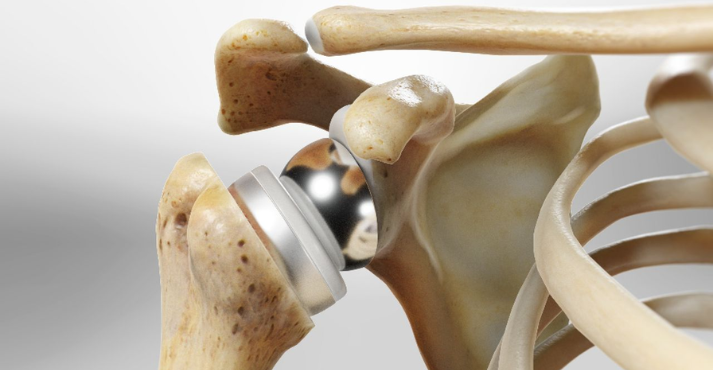Shoulder replacement, also known as shoulder arthroplasty, is a surgical procedure in which damaged parts of the shoulder joint are removed and replaced with artificial components (prostheses). This procedure is typically performed to relieve severe pain and restore function in patients suffering from arthritis, complex fractures, or degenerative joint disease.
Though less common than hip or knee replacement, shoulder replacement offers equally significant improvements in quality of life, especially when conservative treatments like medication, physical therapy, or injections no longer provide relief.
Understanding the Shoulder Joint
The shoulder is a ball-and-socket joint made up of three bones:
- Humerus (upper arm bone)
- Scapula (shoulder blade)
- Clavicle (collarbone)
The head of the humerus fits into a shallow socket (glenoid) in the scapula. The joint is stabilized by muscles, tendons, and ligaments—primarily the rotator cuff.
Over time or due to injury, this joint may deteriorate, leading to pain, stiffness, and loss of movement.
When is Shoulder Replacement Recommended?
You may be a candidate for shoulder replacement if you have:
- Severe osteoarthritis or rheumatoid arthritis of the shoulder
- Post-traumatic arthritis due to injury
- Avascular necrosis (bone death due to poor blood supply)
- Rotator cuff tear arthropathy (arthritis after chronic rotator cuff tears)
- Complex or unrepairable fractures of the upper arm bone
- Failure of previous shoulder surgery
Common symptoms include:
- Constant shoulder pain that interferes with sleep or daily activities
- Limited range of motion
- Difficulty lifting or reaching overhead
- Grinding, clicking, or joint instability
Types of Shoulder Replacement
- Total Shoulder Replacement (Anatomic)
- The damaged ball (humeral head) is replaced with a metal ball.
- The socket (glenoid) is replaced with a plastic cup.
- Best for patients with intact rotator cuff muscles.
- Reverse Shoulder Replacement
- The ball and socket positions are reversed: the ball is placed on the shoulder blade, and the socket on the arm bone.
- Ideal for patients with massive rotator cuff tears or complex arthritis.
- Relies on the deltoid muscle instead of the damaged rotator cuff.
- Partial Shoulder Replacement (Hemiarthroplasty)
- Only the head of the humerus is replaced.
- Suitable for some fractures or when the socket remains healthy.
- Resurfacing Shoulder Arthroplasty
- Involves capping the humeral head with a smooth metal covering.
- Preserves more bone, often used in younger or active patients.
The Procedure
- Typically performed under general anesthesia
- Takes 1.5 to 3 hours
- Involves removal of the damaged bone and cartilage
- Prosthetic components are fixed in place (cemented or uncemented)
Patients usually begin gentle movement exercises shortly after surgery under the guidance of a physiotherapist.
Recovery and Rehabilitation
- Hospital Stay: 1–3 days
- Initial Recovery: Sling for 2–4 weeks
- Physiotherapy: Begins early and continues for several months
- Return to Activity:
- Daily tasks: 4–6 weeks
- Driving: 6 weeks
- Full recovery: 4–6 months
Rehabilitation is crucial to restore strength, flexibility, and function.
Benefits of Shoulder Replacement
- Significant pain relief
- Improved shoulder movement and strength
- Enhanced quality of life and independence
- Long-lasting results (implants can last 15–20+ years)
Risks and Complications
While shoulder replacement is generally safe, potential risks include:
- Infection
- Blood clots
- Nerve or blood vessel injury
- Dislocation or instability
- Wear or loosening of the implant
- Need for revision surgery
Choosing an experienced orthopedic surgeon greatly reduces the risk of complications.
Why Choose a Shoulder Replacement Specialist?
A trained shoulder surgeon can ensure:
- Accurate diagnosis and treatment planning
- Expertise in all types of shoulder replacements, including reverse arthroplasty
- Customized surgical approach based on age, activity level, and joint condition
- Structured rehabilitation for optimal recovery






